

Further reading

Architecture, Art, Design, and Culture using of mud, clay, soil, dirt & dust.
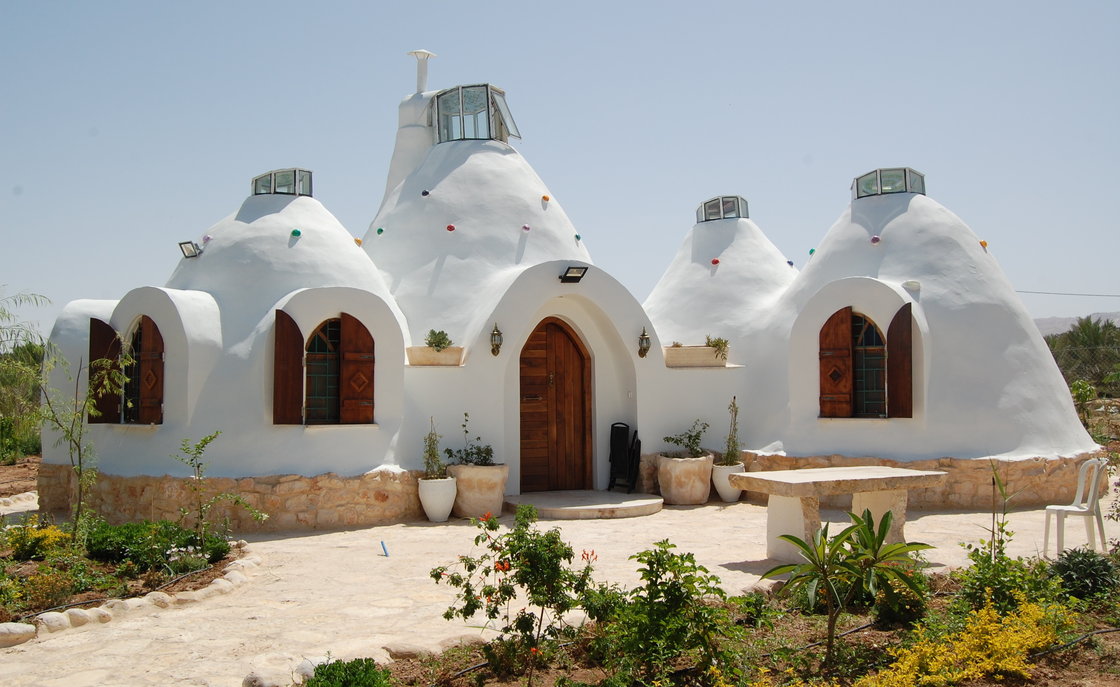
ShamsArd is a young Palestinian architecture firm that has designed several buildings constructed of dirt that respond to both the environmental climate (keeping the house cool in the summer and warm in the winter), and the political and economic climate. An Israeli company that exports the vast majority of cement used in the occupied Palestinian territories, suddenly stopped the supply for almost a month because of cement shortages in the Israeli market. A few months later, the price of cement sold to the Palestinians also increased, making alternative construction techniques, a beautiful design solution. It also responds to history as Jericho, the location of their most recent design, is home to the oldest earth building traditions in the world. Hear and read more about ShamsArd on National Public Radio and in an Al Jazeera article.

Yakhchal in Yazd Province
By 400 BC, Persian engineers had mastered the technique of storing ice in the middle of summer in the desert. The ice was brought in during the winters from nearby mountains in bulk amounts, and stored in a Yakhchal, or ice-pit. These ancient refrigerators were used primarily to store ice for use in the summer, as well as for food storage, in the hot, dry desert climate of Iran. The ice was also used to chill treats for royalty during hot summer days and to make faloodeh, the traditional Persian frozen dessert.
Aboveground, the structure is comprised of a large mud brick dome, often rising as tall as 60 feet tall. Below are large underground spaces, up to 5000m³, with a deep storage space. The space often had access to a Qanat, or wind catchand often contained a system of windcatchers that could easily bring temperatures inside the space down to frigid levels in summer days.

NimVar Yakhchal
The Yakhchal have thick mud brick walls that are up to two meters thick at the base, made out of a special mortar called s?rooj, composed of sand, clay, egg whites, lime, goat hair, and ash in specific proportions, and which was resistant to heat transfer. This mixture was thought to be completely water impenetrable.
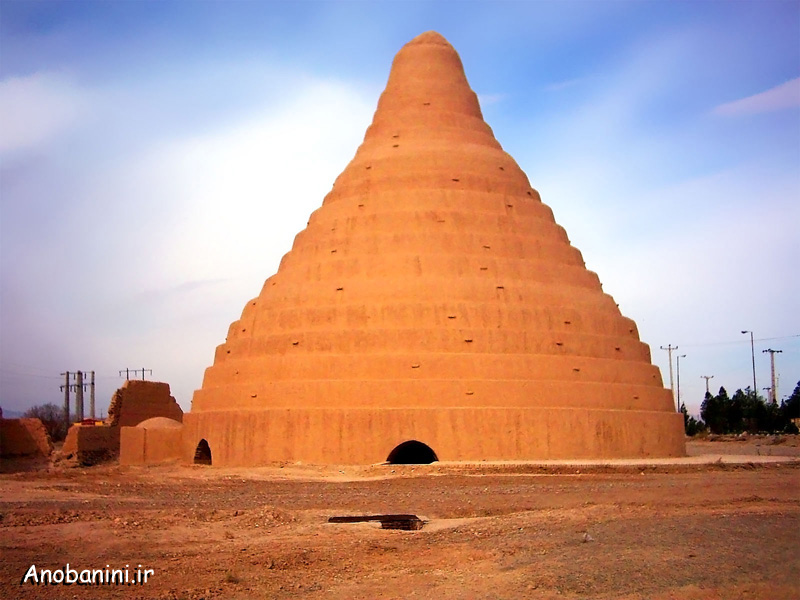
Meraji Yakhchal
The massive insulation and the continuous cooling waters that spiral down its side keep the ice stored there in winter frozen throughout the summer. These ice houses used in desert towns from antiquity have a trench at the bottom to catch what water does melt from the ice and allow it to refreeze during the cold desert nights. The ice is broken up and moved to caverns deep in the ground. As more water runs into the trench the process is repeated.
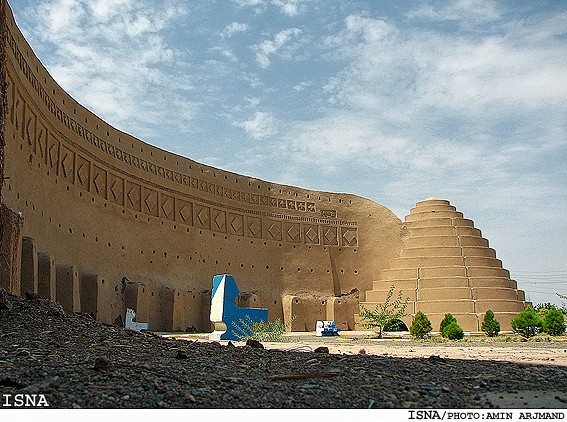
The twin ice-pits on Sirjan, Kerman Province, are surrounded by high walls and were constructed 108 years ago with mud-brick, the ice-pits are surrounded by high walls.
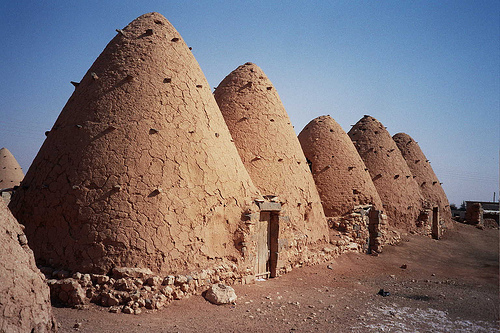
Designed for the desert climate, the beehive homes keep the heat out in a few ways. Their thick mud brick walls trap in the cool and keep the sun out as well (beehive homes have very few, if any, windows). The high domes of the beehive houses also collect the hot air, moving it away from the residents sleeping at the bottom of the house.
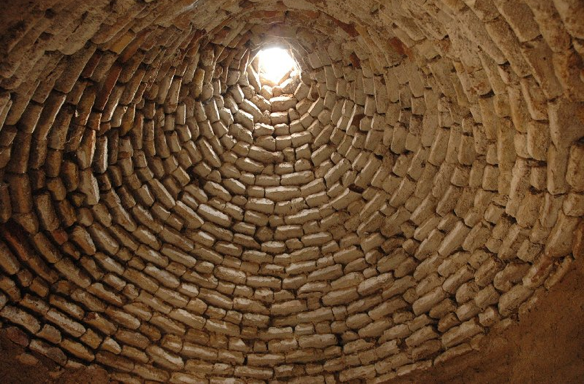
Inside, its high dome serves to collect the hotter air, and outside to shed rainfall instantly, before the brick can absorb it and crumble. Its thick roof-cum-wall is an excellent low-velocity heat-exchanger, and keeps interior temperatures between 85° and 75° F. while outside noon-to-midnight extremes range from 140° to 60°.
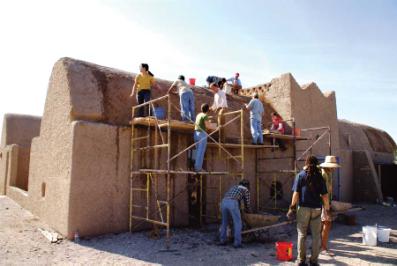
Photo by Yasmina Rossi.
“The allure of elegant earthen architecture can be life-changing. At least that was the case for urbane New Yorker Simone Swan, who in the 1970s became fascinated with the ideas and designs of renowned Egyptian architect Hassan Fathy. Then the 40-something executive head of the Houston-based Menil Foundation, Swan moved to Cairo to study with Fathy. She became his most passionate advocate, and transplanted his adobe building techniques to the Southwestern United States.”
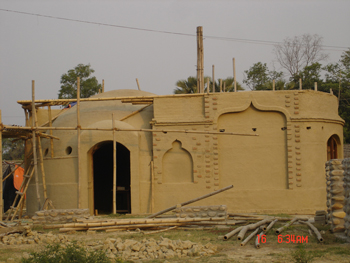
Abari, a socially and environmentally committed research,design and construction firm that examines, encourages, and celebrates the vernacular architectural tradition of Nepal. In this recent project, the dome will be covered with bamboo roof as a protection again heavy tropical rain. The adobe structure is reinforced with bamboo to make it earthquake resitant. This structure is a reception of community structure, which is also being built.
Anselmo Jaramillo is teaching our one-week introductory class, Build With Adobe, starting April 21. A little bit of talk, a lot of work. Adobe 147-201, CRN 21475.
Following that on Monday, April 28 is our very intensive ADOB 112-101, Arches, Domes and Vaults that runs five days a week for two weeks ending May 9. Also taught by Anselmo this will take place on the property of Alejandro Lopez on the east side of Espanola. The project will be a small vault. Alejandro already has a dome.
The two courses make a nice package.
More information on the College website www.nnmc.edu or by calling Quentin Wilson at 505-581-4156. Email Donald Martinez for registration at donmart@nnmc.edu or 505-581-4120
Another one-week introductory class begins June 2. The instructor is yet to be identified.
Another on August 18 with Kirk Higbee the instructor. Followed by Arches Domes and Vaults for two weeks beginning Aug 25 and bracketing Labor Day. Taught by Q Wilson. This will be vault in
Abiquiu which we think will be the largest vault ever built west of the Rio Grande, east of the Chama River, South of the Canadian Border and north of Española.
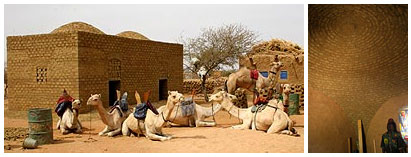
Woodless construction is an approach to building in the sahel that uses traditional building techniques to build houses entirely out of mud, including the roof. Such houses save on scarce wood, encourage local industry by using local skills and materials, and provide good internal comfort, staying warm in cold season, and cool in hot season.